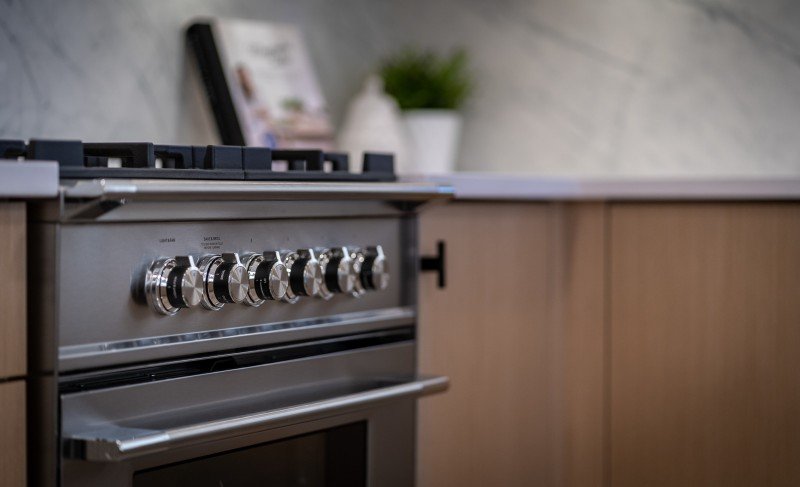
Built-in ovens represent a significant evolution in kitchen design, offering both aesthetic appeal and improved functionality. These appliances seamlessly integrate into cabinetry, providing a clean and contemporary look while optimizing kitchen space. This article delves into the key features, benefits, installation considerations, and maintenance tips for built-in ovens, the ideal choice for both cooking enthusiasts and home chefs alike.
What is a Built-In Oven?
A built-in oven is a type of oven that is designed to be integrated into the cabinetry of a kitchen. Unlike traditional freestanding ovens, built-in models are engineered to fit flush with kitchen cabinetry or countertops, creating a streamlined appearance. They are available in various configurations, including wall ovens, single and double units, and even combination options that incorporate additional cooking Innovations technologies.

Key Features of Built-In Ovens
When selecting a built-in oven, it's essential to consider various features that affect usability, efficiency, and cooking performance. Below are significant features that modern built-in ovens offer:
| Feature | Description |
|---|---|
| Size | Common sizes include 24", 27", and 30", accommodating varying kitchen layouts. |
| Capacity | Ranges from 4 to 10 cubic feet, influencing how much food can be cooked at once. |
| Cooking Modes | Includes convection, steam, and traditional baking options for versatile cooking. |
| Self-Cleaning | Many built-in ovens come with self-cleaning functions to ease maintenance. |
| Smart Technology | Wi-Fi connectivity allows remote operation and monitoring through mobile apps. |
| Control Options | Options include touch screens, knobs, and voice-activated controls. |
Benefits of Built-In Ovens
Built-in ovens come with a myriad of advantages, making them a valuable addition to any kitchen space:
Aesthetic Appeal
- Built-in ovens create a sleek and sophisticated look, enhancing kitchen design by hiding appliances behind cabinetry.
Space Efficiency
- Their design maximizes kitchen space, allowing for better organization and layout flexibility.
Versatile Cooking Options
- With various cooking modes and configurations, built-in ovens cater to different cooking preferences and styles.
Improved Functionality
- Many built-in ovens come equipped with advanced features like multi-zone cooking and automatic settings, making meal preparation easier.
Increased Home Value
- Upgrading to a built-in oven can enhance the appeal of a home to potential buyers, making it an attractive investment option.
Installation Considerations
Installing a built-in oven requires careful planning to ensure safety and efficiency. Here are critical factors to consider before installation:
Location: Choose a location that is accessible yet does not disrupt the kitchen workflow. Ensuring proper ventilation is also crucial.
Electrical Requirements: Most built-in ovens need dedicated electrical connections, often requiring a licensed electrician’s assistance.
Cabinet Space: Measure the cabinet space to ensure it fits correctly while leaving enough room for heat dissipation and airflow.
Height: Install ovens at an appropriate height for ease of use, ideally around waist level to minimize bending.
Maintenance Tips for Built-In Ovens
Proper maintenance extends the lifespan of built-in ovens and ensures consistent performance. Below are maintenance tips:
Regular Cleaning: Wipe down surfaces regularly and use the self-cleaning option as needed. Avoid using harsh chemicals that can damage the finish.
Check Seals: Inspect door seals for wear and tear to ensure efficiency; replace them if necessary to avoid heat loss.
Calibrate Temperature: If the oven seems inaccurate, periodically verify its temperature with an oven thermometer.
Inspect Electrical Connections: Check electrical connections periodically to avoid potential hazards.
FAQs about Built-In Ovens
Q1: How do built-in ovens differ from freestanding ovens?
A: Built-in ovens are designed to integrate within cabinetry for a seamless look, while freestanding ovens stand alone and can be moved easily.
Q2: Can I install a built-in oven myself?
A: While some homeowners may attempt installation, it is advisable to hire professionals, especially for electrical connections.
Q3: What cooking modes do built-in ovens offer?
A: Many built-in ovens include various cooking modes such as baking, broiling, convection baking, and self-cleaning modes.
Q4: Are built-in ovens energy-efficient?
A: Many modern built-in ovens are designed with energy efficiency in mind, featuring improved insulation and advanced cooking technology.
Q5: How much do built-in ovens typically cost?
A: Prices can range widely based on features and brands, typically beginning around £800 and going up to several thousand dollars for high-end models.
Built-in ovens are an essential component of modern kitchen design, combining functionality with elegant aesthetics. With a wide range of features to choose from and the myriad benefits they offer, investing in a built-in oven can dramatically enhance the cooking experience. By carefully considering installation requirements and maintenance practices, homeowners can enjoy the advantages of this kitchen appliance for years to come. As kitchens continue to evolve, built-in ovens will remain a vital element of cooking innovation and style.






